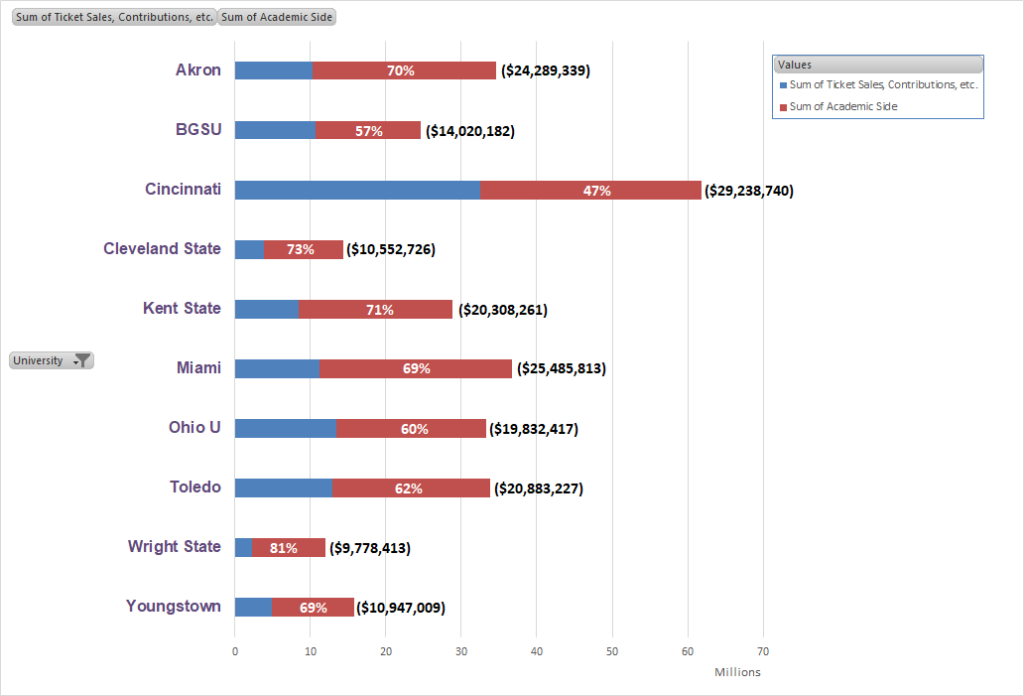American Association of University Professors
News & Blog
10.25.19
How much is your university subsidizing athletics?
Ohio universities have felt the financial squeeze in recent years. Despite modest increases in recent state budgets, State Share of Instruction (SSI) has not recovered from decades of decline and neglect. Some campuses also have faced enrollment challenges, as competition among institutions has increased and students are increasingly reluctant to take on student debt.
As a result of these financial woes, Ohio universities have done a number of things to save money: hire adjuncts instead of full-time faculty; reorganize or eliminate academic departments; offer buyouts to faculty; and other measures that target the academic sides of the institutions.
Meanwhile, universities continue to spend vast sums subsidizing their athletic programs. Most students and taxpayers have no idea that every university in Ohio, save Ohio State, takes heavily from the academic side of the institution to off-set the millions in spending on athletics that are not covered by ticket sales, sponsorships, and other revenues actually generated by athletics.
The graph below illustrates the percentage and dollar amount that each Ohio university subsidized their athletic program for the 2017-18 academic year.

Source: USA Today NCAA Finances
[Ohio State University not listed, as it allocates $0 from the academic side to its athletics.]
Ohio faculty support student-athletes and appreciate the community that sports can build on a campus. But when universities are pressed with tough financial decisions, can they continue to justify robbing the academic mission — the reason our institutions exist — to subsidize athletics?
Here are some common myths about college athletics:
Myth 1: University athletics are self-sustaining or make money for their institutions.
Fact: There are only a handful of universities nationwide (including Ohio State) that have self-sustaining or revenue-generating sports. At all other institutions, athletics are paid for by a mixture of student fees, tuition dollars, and taxpayer-funded state subsidy.
Myth 2: Athletics draws students to universities.
Fact: Surveys have shown that athletics has little to nothing to do with students choosing schools that are not the big college football powerhouses.
Myth 3: Athletics serves as advertising for universities.
Fact: Research has shown that universities would be better off using the money to fund an actual advertising campaign than using the money for athletics.
Myth 4: Most of athletic spending supports student-athlete scholarships and all student-athletes get a “free ride.”
Fact: At Division 1 schools, less than 17% of athletic budgets are spent on student scholarships. Most of the athletic budget is spent on coaches’ salaries and facilities. Very few student-athletes get full-tuition scholarships.